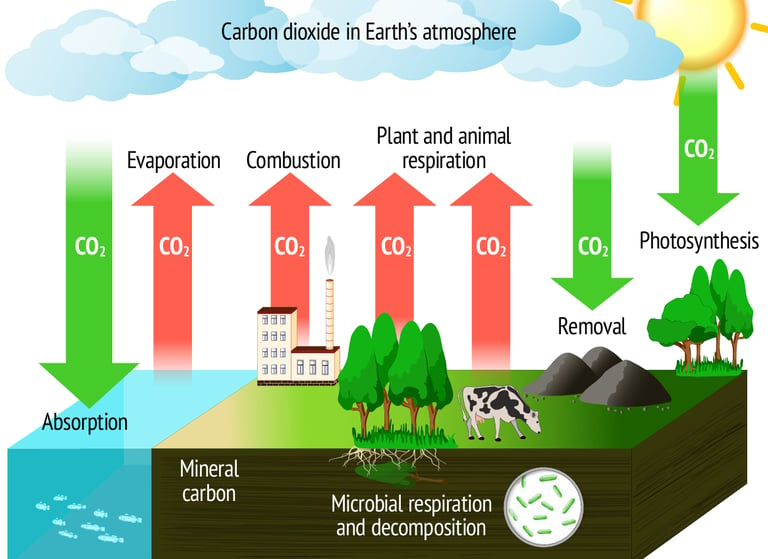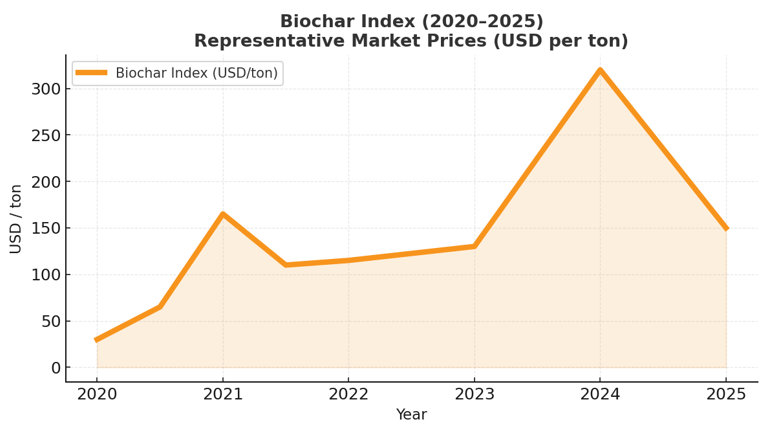Why Biochar?
Today buildup of greenhouse gases — especially CO₂ — in the atmosphere is driving governments, international agencies and major corporations to pursue carbon removal strategies rather than simply emission reductions. There are two broad pathways: high-tech engineering solutions (e.g., direct air capture) and nature-based strategies. Biochar which is a stable carbon-rich form of biomass thermally processed "PYROLYSED" under low-oxygen conditions represents "NATURE-BASED REMOVAL" method.


What is biochar and how does it remove carbon?
Biomass (e.g., agricultural residues, saw dust, forest slash) is converted into biochar; this sequestration process locks carbon in a stable form and can prevent CO₂ returning to the atmosphere. Biochar can store carbon at significantly lower cost than many purely technological solutions.


Market opportunity
Corporations with large climate commitments (for example pledging to be carbon-negative by 2030) are increasingly buying carbon removal credits, and biochar credits are emerging as one of the instruments.
Co-benefits
Beyond carbon removal, biochar adds value via improved soil health (greater fertility, water retention, reduced nutrient loss), waste biomass utilisation, and potentially energy by-products from pyrolysis. The multiple benefits can make biochar financially and environmentally attractive.
Biochar Index
Between 2020 and 2025, biochar prices rose sharply from around $30 per ton in early 2020 to a peak of nearly $320 per ton in 2024, before stabilizing near $150 per ton in 2025. Interest grew rapidly as biochar emerged as a credible carbon removal solution. In 2021, prices surged toward $165 per ton as corporate climate strategies began including durable carbon storage. The momentum was reinforced by international initiatives—such as India’s launch of its first state-supported biochar program and Google’s deal to buy carbon removal credits from Indian farms—signaling mainstream adoption.
As the prices began to moderate in 2025, the persistent preference for nature-based carbon removals continued to reinforce a strong and sustainable market foundation for biochar.


